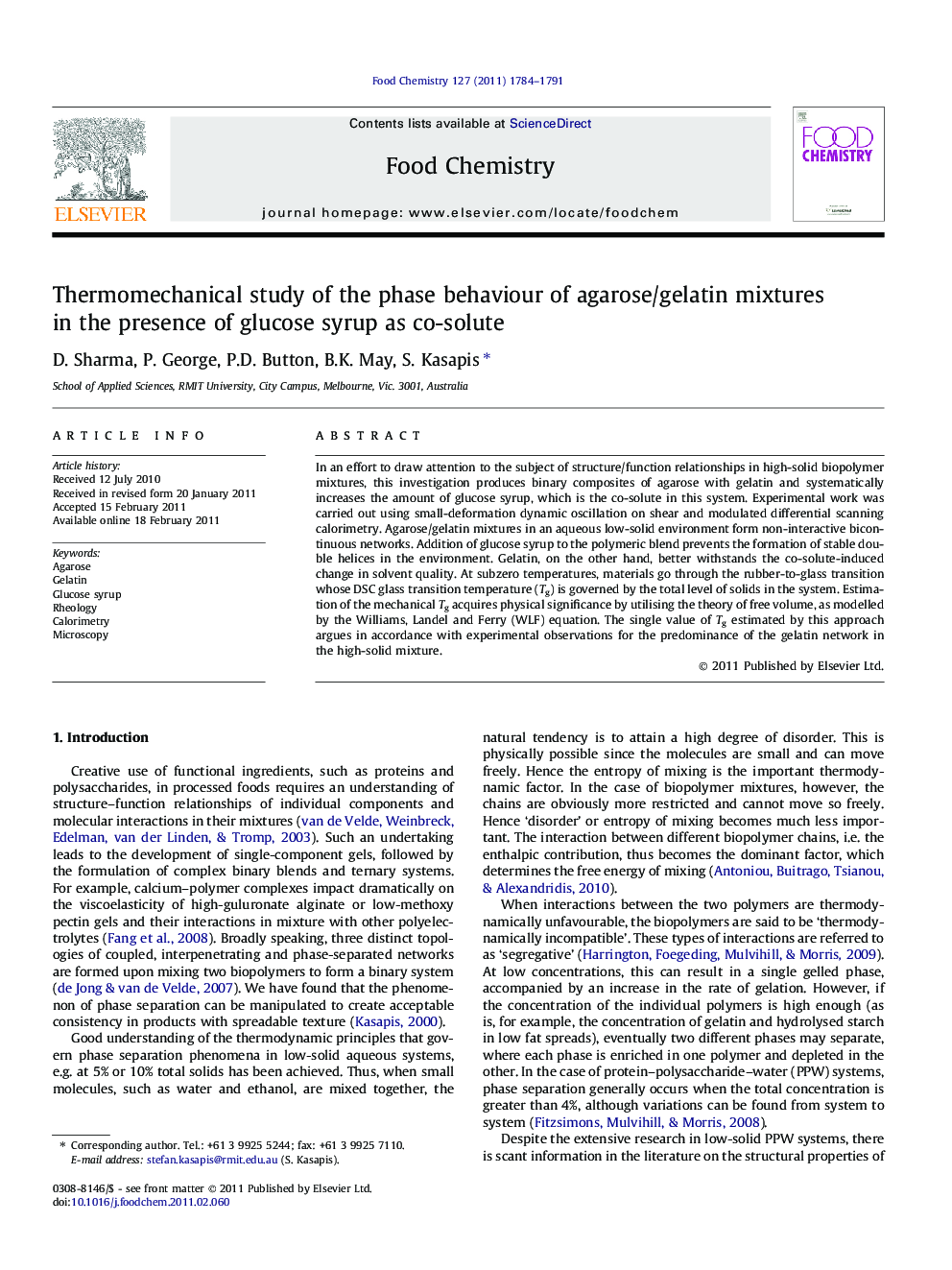| Article ID | Journal | Published Year | Pages | File Type |
|---|---|---|---|---|
| 1184702 | Food Chemistry | 2011 | 8 Pages |
In an effort to draw attention to the subject of structure/function relationships in high-solid biopolymer mixtures, this investigation produces binary composites of agarose with gelatin and systematically increases the amount of glucose syrup, which is the co-solute in this system. Experimental work was carried out using small-deformation dynamic oscillation on shear and modulated differential scanning calorimetry. Agarose/gelatin mixtures in an aqueous low-solid environment form non-interactive bicontinuous networks. Addition of glucose syrup to the polymeric blend prevents the formation of stable double helices in the environment. Gelatin, on the other hand, better withstands the co-solute-induced change in solvent quality. At subzero temperatures, materials go through the rubber-to-glass transition whose DSC glass transition temperature (Tg) is governed by the total level of solids in the system. Estimation of the mechanical Tg acquires physical significance by utilising the theory of free volume, as modelled by the Williams, Landel and Ferry (WLF) equation. The single value of Tg estimated by this approach argues in accordance with experimental observations for the predominance of the gelatin network in the high-solid mixture.
Research highlights► We modelled the phase behaviour of high-solid gelatin/agarose/glucose syrup mixtures. ► Gelatin forms coherent gels with high levels of glucose syrup in the mixture. ► Agarose gels dissolve in the presence of high levels of glucose syrup in the mixture. ► WLF/free volume approach appears to be applicable to high-solid two polymer systems.
